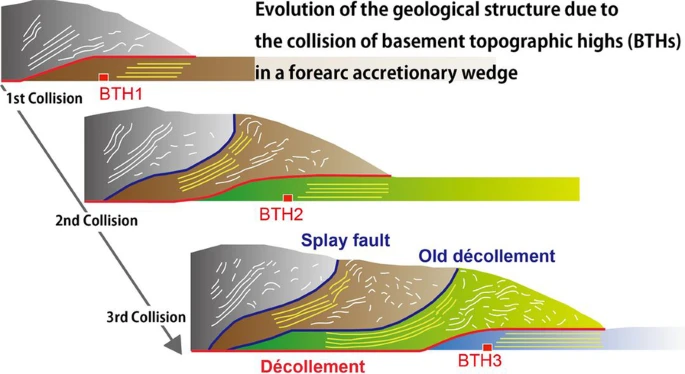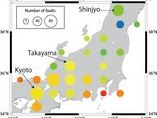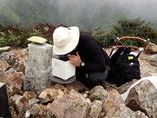Research
The Japanese islands, like everywhere else we live, lie on a large “crust” covering the Earth, called the Earth's crust.
We study the long-term deformation process of the crust and the geological structure of the subsurface.
Our planet has an area called the 'subduction zone' where plates collide.
There are various movements that have a significant impact on the world we live in.
Our research into the geodynamics of subduction zones mainly uses numerical simulations (geodynamic modelling) to understand the long-term evolution of geological structures in subduction zones.
Geomechanics of active faults
|
|
|
We study the dynamics (geomechanics) of the Earth, in particular the movement of faults.
This research is concerned with how earthquakes occur and how we can assess them.
One way of finding faults that are prone to earthquakes is to calculate the slip tendency, which is the relationship between the force field acting on the crust (stress field) and the orientation of the fault.
This method gives a numerical indication of how slippery a fault is and thus allows a more accurate assessment of the likelihood of earthquakes.
Through these studies we aim to make a significant contribution to the assessment and understanding of earthquakes.
|
|
|
We live by building above (or below) the ground (or underground) and by using underground resources.
It is therefore important to know what is going on in the ground (underground) that supports it.
However, it is not easy to know the underground, even if it is only a few centimetres.
That is why we carry out geophysical surveys to understand the geological structure of the subsurface.
|
|
|



